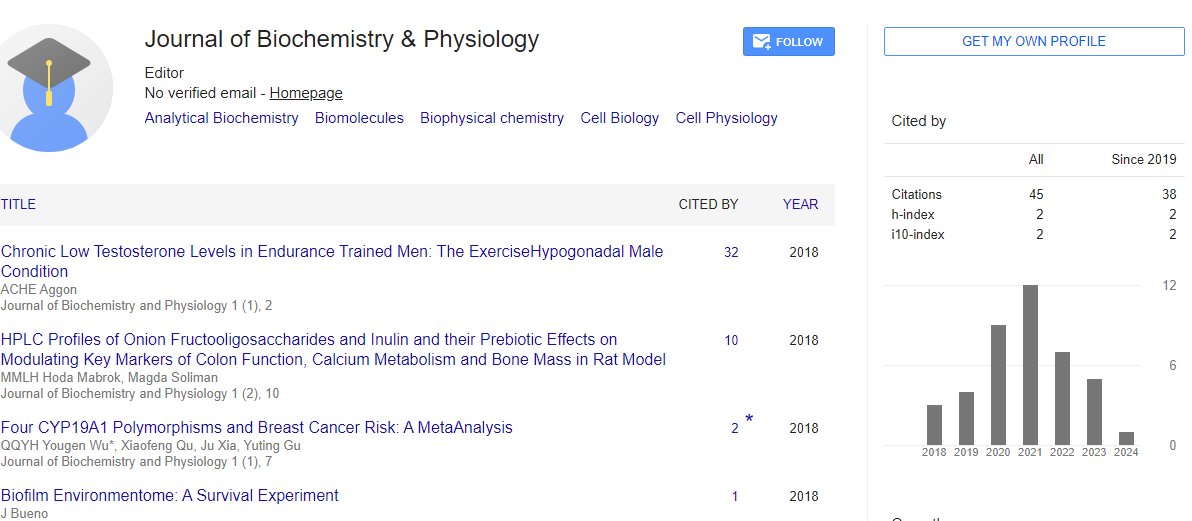Short Communication, J Biochem Physiol Vol: 4 Issue: 5
Liver PPAR? is protective against NAFLD
Walter Wahli
Nanyang Technological University, Singapore
Abstract
The liver is a key organ of metabolic homeostasis with functions that oscillate in response to food intake. Under the control of PPARα in the mouse, the genes required for lipid catabolism are transcribed before birth so that the neonatal liver has a prompt capacity to extract energy from milk upon suckling. The mechanism involves a fetal glucocorticoid receptor (GR)-PPARα axis in which GR directly regulates the transcriptional activation of PPARα by binding to its promoter. In adult mouse, PPARα deletion impairs fatty acid catabolism, resulting in hepatic lipid accumulation in preclinical models of steatosis. These findings underscore the relevance of hepatic PPARα as a drug target for NAFLD as they show that PPARα plays a central role in the clearance of free fatty acids released from adipocytes, the major source of lipid that accumulate in NAFLD. FGF21 is a hepatokine with beneficial metabolic effects, including control of sucrose preference. It is encoded in Fgf21, a unique hepatic gene that the transcription factors PPARα and ChREBP both regulate to control sugar intake. In fact, ChREBP is required for the expression and secretion of hepatic FGF21 in response to carbohydrate intake. Interestingly, experiments using hepatocyte-specific PPARα knockout mice reveal a physiological role for PPARα in the context of glucose challenge, as ChREBP is unable to induce Fgf21 in the absence of hepatic PPARα. These observations suggest that FGF21’s glucosemediated response is dependent on both ChREBP and PPARα. Altogether, these findings underscore the relevance of hepatic PPARα as a drug target for NAFLDs as they show that PPARα plays a central role in the clearance of free fatty acids released from adipocytes, the major source of lipid that accumulate in NAFLD. Furthermore, they imply that drug targeting of PPARα may exert part of its beneficial effects on metabolic homeostasis by supporting the ChREBP-induced loop controlling sweet preference via FGF21.
Keywords: fetal glucocorticoid
Biography
Walter Wahli is Professor of Metabolic Disease at Lee Kong Chian School of Medicine, Nanyang Technological University and Imperial College London, Singapore. He is also the President of the Council of the Nestle Foundation for the study of problems of nutrition in the world. Prior to these, he was working at the University of Lausanne, Switzerland. He is recognized for his contributions to the area of energy metabolism. He is the Co-Discoverer of the transcription factors (PPARs), which are activated by fatty acids and eicosanoids and has provided fundamental insights into their multifaceted functions. His discoveries contributed in advancing the understanding of the molecular signaling of these lipids, which impact most key biological processes in vertebrates, including humans. He was awarded several prizes and recently received the Lifetime Achievement Award from the Faculty of Biology and Medicine, University of Lausanne.
 Spanish
Spanish  Chinese
Chinese  Russian
Russian  German
German  French
French  Japanese
Japanese  Portuguese
Portuguese  Hindi
Hindi 